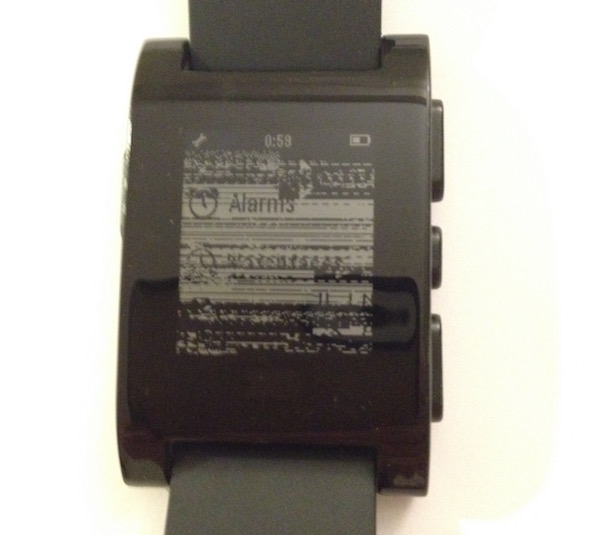The first-generation Pebble (now dubbed Pebble Classic) is, in my opinion, the best smartwatch in terms of cost/benefit. Unfortunately, a few of them start to manifest screen tearing after a few months of use, and mine was one of the “lucky” ones:

At first, I thought it was a software issue, but the actual cause is that the screen connector does not cope well with the frequent vibration alerts. Such connectors are usually hard to fix/replace, but the gentleman on the video below realized that some pressure over the connector solved the issue. His ingenious choice of padding material caught my eye: small pieces of toilet paper!
Since I had a tearing Pebble lying around, I decided to try the fix, which, amazingly, worked! It is likely not as waterproof as it was before, but I can live with that.
However, I ignored his warning about the vibration motor being glued to the back plate and attempted to do the padding without separating it. End result: I snapped the connections between motor and circuit board.
It wasn’t very hard to re-solder the wires, but it took me a while to realize there was some thin layer of material (glue?) over the original soldering points. If you ever need to solder those wires back, first scratch the original solder with a non-conductive instrument, or the solder won’t melt (or conduct anything).
Another interesting observation: if you short-circuit those points (yes, I did it a couple times) and the watch goes black, don’t despair: just plugging the power would turn mine back on. It seems to have some protection against that. Just don’t abuse it.
Of course, if you have this issue, you should first contact Pebble. I actually did it and got a replacement from them, and only tried this because they asked me to keep the faulty one.
Comments
Mary Aleixo
Roberto
sola
This has worked for me as well.
I used a bit harder material because toilet paper (first attempt) proved to be too flexible and I still got some screen tearing afterwards. Normal, folded paper (from the printer) did the trick.
I also snapped the connections to the vibration motor and planning to solder it back.
chesterbr
Interesting! My first attempt was like that, but I found it hard to find a good balance between "too much" and "too little". And indeed I got some tearing after a long time, which required a second stuffing.